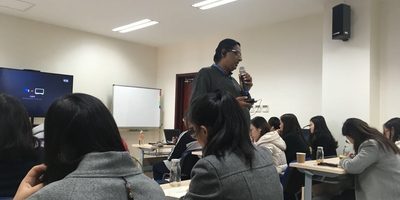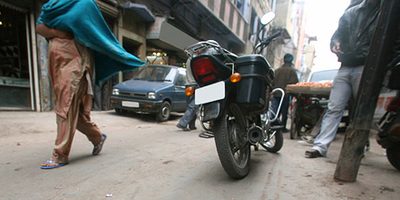
Media workshop on road safety & injury in New Delhi in collaboration with WHO India
We organized a media workshop Road Safety and Injury on 16th June in New delhi in association with World Health Organisation. The workshop aimed at providing an overview of regional burden of road traffic injuries and a forum to discuss evidence-based approach for covering road safety and injury stories.
Apart from our team and WHO India representatives, the workshop was also attended by senior officials from the traffic police, officials from the Ministry of Road Transport and participants from the media.
Dr. Patanjali Dev Nayar, Regional Advisor – Disability, Injury prevention and Rehabilitation, WHO -SEARO, presented the core data on road traffic injuries for the South-East Asian region and highlighted the fact that vulnerable groups such as Pedestrians, cyclists and motorcyclists make up 47% of road traffic deaths in the region. His presentation mentioned 5 key risk factors - over speeding, drunk-driving, riding 2-wheelers without helmets, driving 4-wheelers without seat-belts and not using child restraints in 4-wheelers – for assessing the state of road traffic safety in India.
He also mentioned that road traffic injuries are not just a human issue; it has a deeper economic impact (upto 3% on GDP). Discussions revolved around the need to strengthen the legislation and law enforcement along with creative awareness campaigns to bring about the necessary behaviour change in people. The workshop also touched upon the need to improve infrastructure, as it will be a critical and effective mechanism to reducing road traffic injuries.
Deaths caused due to accidents are estimated to cost countries from 3-5% of GDP and push many families into poverty.
Ms. Jagnoor Jagnoor, our Head of Injury division, India, presented her views on how the understanding of research on road safety is presently very limited and it is extremely essential to generate more knowledge about the burden of road traffic injuries, evidence, research and data. She also emphasized on the fact that we should change our perspective about road traffic injuries and mentioned that road traffic injuries are not accidents, and are an opportunity to prevent more lives from being lost. She put forth 4E's of road safety - Education, Engineering, Enforcement and Emergency medical services.
Road accidents remain the number one cause of death among the age group of 15–29 years.
The experts and media present at the workshop also discussed the need for improving vehicle standards as it is a critical part of road safety and needs to be implemented thoroughly. The workshop also presented a case for an increased community participation with a solution-based approach and stressed on the fact that media reporting of road incidents should move away from reporting accidents only and should focus more towards a humane face to face media stories. The interactive sessions also had participation from senior officials from the Accident Research Cell of the Delhi Traffic Police.
Earlier this year,we conducted a study of 2200 people in three hospitals in North India with one of its collaborators Dr. Shankar Prinja, from PGI, Chandigarh, highlighting the health, social and economic burden of road injuries. It was revealed that 10% of people die post- discharge and that more than a third of the families experienced financial distress due to injuries. It is the young economically productive age group that at the highest risk, and it is estimated that the total cost of road injuries is 3% of India’s GDP, which is more than our entire health budget.
Around 1.25 million people die every year on the world’s roads. According to data available with the WHO, only 47 countries follow good practice on one of the main speed management measures, namely implementing an urban speed limit of 50 km/h or less and allowing local authorities to reduce these limits further on roads around schools, residences and hospitals.
As per the data available with WHO, road traffic injuries kill approximately 316000 people each year in the South East Asian Region and are the highest cause of death only after AIDS and TB. If the situation doesn’t improve and necessary interventions and actions are not taken, the road injury deaths are predicted to rise from ninth biggest killers in 2015 to seventh biggest in 2030.
The situation in India is no different. According to police data from 2015, 43.7 per cent of the total road crashes were due to over- speeding which caused 60,969 deaths and 2,12,815 persons injured.








